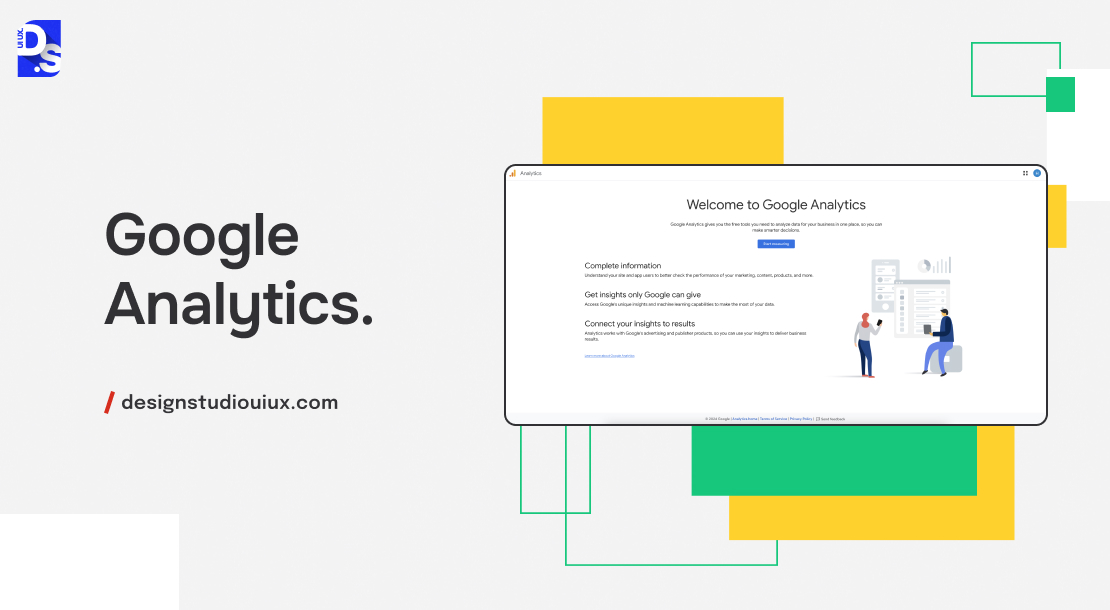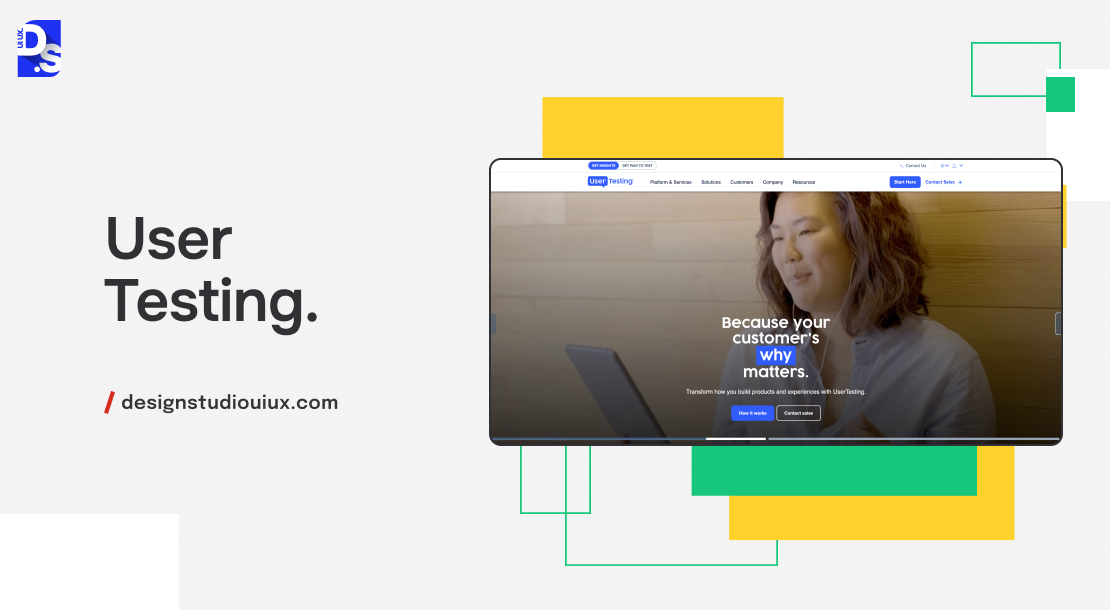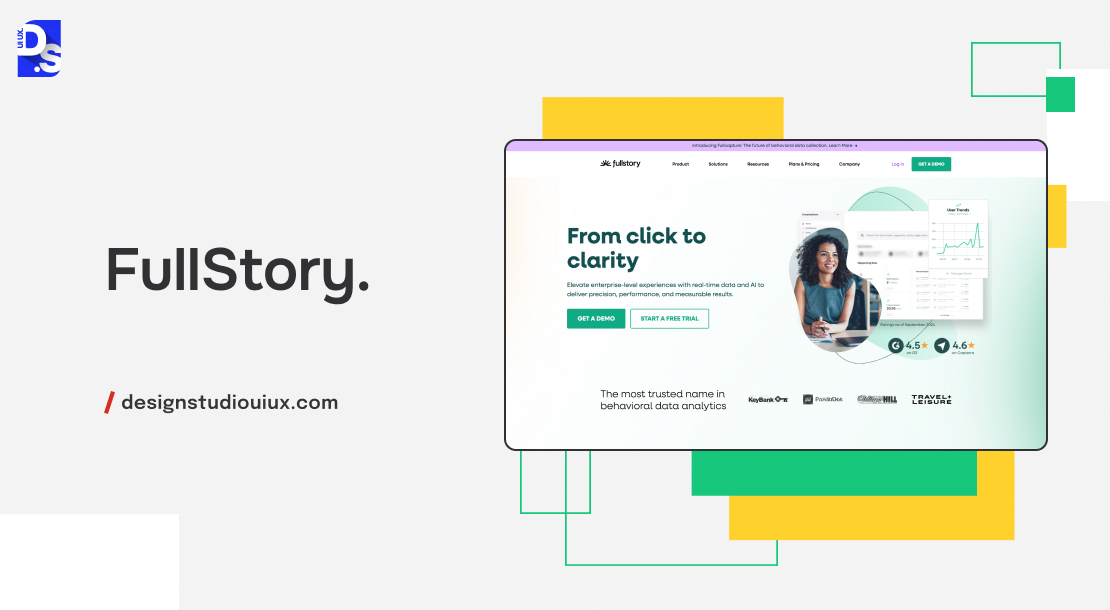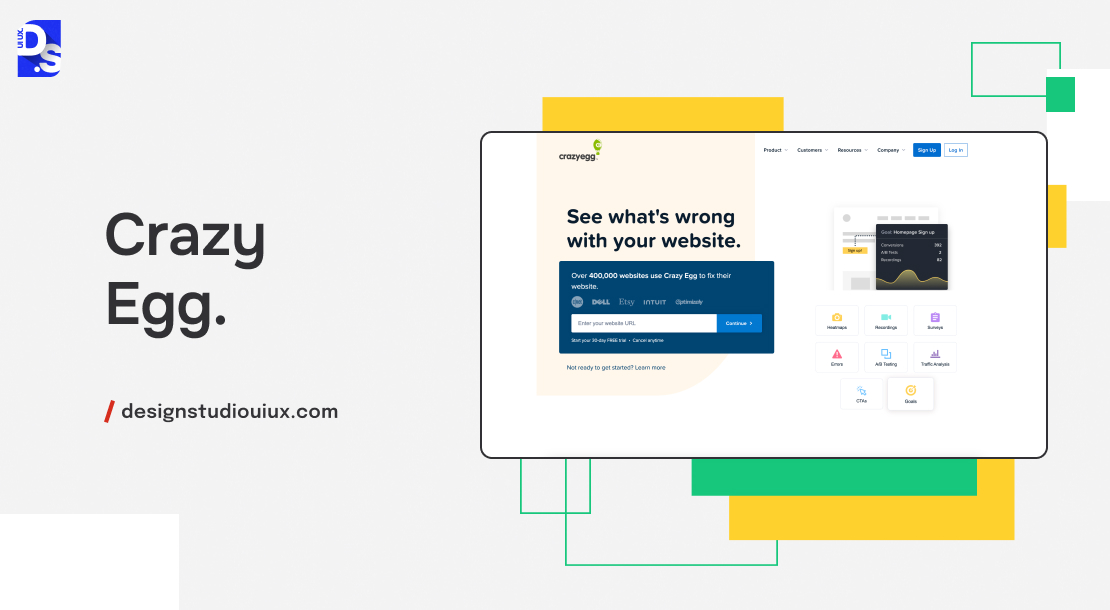10 Best UX Audit Tools to Optimize User Experience in 2025
Meeting user expectations is not something that digital products do by accident. Unless you proactively audit your digital product’s UX, you will never know whether it actually delivers exceptional value to users. UX audit tools help you do exactly that.
This article explains what these tools do and how they help. Then, we will give you our list of the top 10 UX audit tools in 2025 that deserve your attention.
- Spotify uses Hotjar to understand user interactions and improve their music streaming experiences
- Uber uses Mixpanel to analyze user behavior and measuredly improve their app’s features
- Zendesk uses FullStory to improve customer support interactions and user experience
- 300,000+ websites use Crazy Egg to test and refine their sites’ designs
- Over 6 million companies use Google Analytics to track the performance of their digital products
All of these tools we just listed are ‘UX audit tools.’ If your company is not using them to audit your digital products in 2025 and beyond, you are missing out big time.
Best UX Audit Tools to Use
Let us go through the top 10 UX audit tools that help us carry out all of these tasks:
1. Google Analytics
Google Analytics is often associated with digital marketing and research, but it also serves as a powerful UX analytics tool.

Role in the UX Audit Process
- It helps uncover where users struggle on your site, allowing for targeted improvements
- The tool collects both quantitative and qualitative data, making it easier to analyze user interactions
- By analyzing user behavior, GA provides insights that can lead to meaningful enhancements in your product’s UX
Core Features:
- Real-time reporting – monitor user activity as it happens
- Understand user demographics, interests, and behaviors
- Set up goals to measure how well users complete desired actions, such as signing up or making purchases
- Discover exactly where your traffic is coming from and how users find your site
- Analyze how users interact with your content, including page views and average session durations
Integration Capabilities
- Google Analytics integrates seamlessly with Google Ads, Google Tag Manager, and various other analytics tools which enhance its functionality
Strengths
- 6+ million users
- Comprehensive data collection and reporting capabilities
- Ability to track user behavior across multiple channels
- Free to use
- Known for its reliability, speed, and providing real-time data without significant delays
- Can be trusted to make informed decisions
Weaknesses:
- Can be overwhelming for beginners due to the sheer volume of data
- Requires setup and configuration to capture the right metrics effectively
Final Review: It is the most popular UX audit tool in the world and it is free to use. That means it is a must-use for all digital brands!
2. Hotjar
With a premium account on Hotjar, you can perform user testing, heatmap analyses, session recordings, scroll map analyses, and of course, UX audits. It’s the most efficient tool for identifying which design elements attract the most attention and which ones cause frustration.

Role in the UX Audit Process
- Visualize user behavior through heatmaps, session recordings, scroll maps, usability tests, etc.
- Conduct surveys directly via the tool to ensure you have both qualitative and quantitative data
- Uncover how users navigate your site
- Create a list of targeted UX design improvements based on actual usage patterns
Core Features:
- Offers visual representations of user clicks, scrolls, and movements that highlight areas of high engagement (hot) and low engagement (cold)
- Watch real user sessions to see how they interact with your site; identify all major pain points on the spot
- Gather direct feedback from users about their experiences and preferences
- Collect real-time feedback on specific design elements of your site
Integration Capabilities
- Hotjar integrates seamlessly with some platforms, one of them being Google Analytics
Strengths
- Provides a holistic view of user behavior through heatmaps and session recordings
- Combines analytics and feedback tools in one platform, reducing the need for multiple tools
- Offers real-time feedback mechanisms that enable designers to make quick adjustments
Weaknesses
- The free plan has severe limitations on data collection and storage, which may not suffice for large-scale websites
Final Review: Another excellent, ‘must-use’ UX audit tool for any digital brand looking to optimize their websites’ user journeys.
3. Heap
Heap is an advanced analytics tool that can automatically capture all user interactions on websites. It is popular for auditing complex eCommerce sites.

Heap eliminates the need for manual tracking. It provides detailed insights into clicks, taps, form submissions, and other common but important user actions.
Role in the UX Audit Process
- The tool automatically collects data on user interactions, making it easier to analyze and derive insights without manual setup
- Heap helps uncover how users interact with your site, allowing you to pinpoint pain points and areas for UX design improvements
- By visualizing user journeys and behaviors with Heap, you can learn a lot about your product’s UX
Core Features
- Session replays – watch recordings of user sessions to see exactly how they navigate your site
- Visualize where users click, scroll, and interact on your pages
- Compare different user paths to the same conversion goal; understand the most effective routes
- Use data science to gain insights into user drop-off points and other critical metrics
- Analyze specific user segments to tailor experiences and optimize engagement.
- Customizable Dashboards: Create dashboards that fit your specific audit reporting needs
Integration Capabilities
- Heap integrates well with other UX tools and platforms
Strengths
- Automatically captures all user interactions, saving time and effort in data collection
- Provides a wide range of analytics features, including session replays and heatmaps
- Enables detailed analysis of user journeys and conversion paths
- Offers customizable dashboards for tailored reporting
- Helps identify pain points and optimize user experience effectively
Weaknesses
- Some users may find the breadth of features overwhelming
- The pricing model can be a roadblock for smaller businesses or startups
Final Review: Heap is a powerful UX audit tool that is in the must-use category for all eCommerce sites.
4. UXCam
UXCam is a leading app experience analytics tool that empowers mobile teams with fast, contextual, and high-fidelity insights.

Role in the UX Audit Process
- The tool automatically captures user sessions, making it easy to gather insights without any manual tracking
- UXCam helps you closely analyze all user interactions
- By visualizing user behavior through session recordings and heatmaps, you can significantly enhance your website or app’s UX
Core Features:
- Session recordings
- Heatmaps – visualize where users click, scroll, and interact
- Screen flow tracking – get overviews of how users move through your app and identify friction points in their journeys
- Log app crashes and UI bugs to communicate issues to your product team for timely fixes
- Seamlessly connect with Firebase for enhanced mobile app analytics and performance tracking
Integration Capabilities
- UXCam integrates well with other analytics platforms, including Firebase
Strengths
- Provides in-depth insights into user behavior through session recordings and heatmaps
- Automatically captures user interactions, saving time on manual tracking
- Helps identify usability issues and areas for improvement effectively
- Supports real-time feedback and analysis
- Lightweight SDK ensures smooth app performance without compromising responsiveness
Weaknesses
- Some users may find the breadth of features overwhelming
- The pricing model is not ideal for smaller teams or startups
Final Review: If you operate a complex, feature-packed app UXCam is an invaluable tool that your team must use.
5. UserTesting
UserTesting helps designers promptly gather user feedback on websites, apps, and prototypes. Unlike conventional review sites, it provides real-time insights from target user segments. This allows designers to register their experiences and design preferences in real time.

Role in the UX Audit Process
- Use UserTesting to quickly collect user feedback through recorded sessions and live conversations
- Get an instant analysis of this data from the tool to create your own list of actionable insights
Core Features:
- Receive audio and video messages from users as they test your product,
- Schedule real-time discussions with users to ask questions and gain deeper insights into their feedback
- Conduct tests to evaluate user interactions and gather qualitative data on their experiences
- Assess market reactions to your design decisions before the product development stage
- Access a library of pre-built templates to streamline the feedback collection process
Integration Capabilities
- UserTesting integrates well with various tools and platforms, including GA
Strengths
- Provides real-time feedback from users
- Offers a diverse range of testing methods, including moderated and unmoderated tests
- Helps identify user needs and preferences effectively
- Trusted by major companies like Facebook and Grammarly
Weaknesses
- The cost of the platform is high
- Some users may find the volume of feedback overwhelming
Final Review: Want your next audit to be primarily about identifying and responding to user feedback? Then UserTesting is an invaluable, must-use UX audit tool for you.
6. Mixpanel
Mixpanel is the most highly-ranked UX audit tool among SaaS companies. That is because it can track, analyze, and provide in-depth insights into user actions in real-time.

Role in the UX Audit Process
- Mixpanel live-tracks user actions, helping you understand how users engage with your site and where they encounter issues,
- The platform automatically captures user interactions, making it easy to gather and analyze data
- By focusing on specific user actions, Mixpanel helps you identify what changes can improve conversion rates
Core Features:
- Comprehensive tracking of user interactions across your app
- Robust data management capabilities that support detailed analysis
- Flexible APIs for integrating with other tools and platforms
- Seamless connectivity with various data analytics platforms
Integration Capabilities
- Mixpanel integrates amazingly well with other analytics and data platforms
Strengths
- Highly regarded for its detailed product analytics and user segmentation capabilities
- Enables funnel analysis to track user progress and identify drop-off points
- Supports both mobile and web applications
- Offers a free plan with advanced analytics features
Weaknesses
- Customer support has received criticism for being slow and unresponsive
- Requires some technical knowledge to implement tracking effectively
Final Review: Mixpanel is a powerful tool for conducting UX audits, particularly for SaaS companies looking to optimize user engagement.
7. Kissmetrics
Kissmetrics is a powerful and popular web analytics tool. It has robust analytics capabilities and can transform user data into deep insights about customer behavior. This makes it invaluable for UX audits.

Role in the UX Audit Process
- The tool will automatically capture user interactions and simplify the data-gathering process
- Its user behavior analysis will help you understand how users interact with your site, their most and least-preferred features customers, etc.
Core Features:
- Efficient at monitoring important metrics like churn rate, monthly recurring revenue (MRR), subscriptions, and new trial starts
- Can instantly identify the most and least viewed web pages on your site; you can then use those insights to optimize your pages’ content layouts
- Can track the behavior of specific customer segments over time to understand abandonment, retention, and engagement patterns
- Ideal for discovering weak points in the onboarding process to enhance user experience
Integration Capabilities
- Kissmetrics integrates seamlessly with various platforms.
Strengths
- Provides a detailed understanding of customer behavior and engagement patterns
- Offers valuable insights into key metrics that can be used to drive strategic business decisions
- Supports cohort analysis for tracking user retention and behavior over time
- Facilitates A/B testing
Weaknesses
- Higher cost compared to other analytics tools
- Some users may find it less detailed than competitors like Mixpanel
Final Review: Kissmetrics is a highly potent tool for UX audits. Its ability to track user interactions over time is unique and it can give your audits more depth.
8. FullStory
FullStory is a product analytics tool like Mixpanel. It’s equally popular in the UX audit circle because it can quickly identify UX issues and opportunities for improvement.

Role in the UX Audit Process
- FullStory can track user navigation across all of your websites
- It can help discover drop-off points, optimize user flows, and benchmark key metrics
- The tool combines quantitative and qualitative data by adding context to every user interaction it tracks
Core Features:
- Detailed tracking of user interactions and behavior
- Combines analytics with qualitative data for context
- Seamlessly integrates with other tools to give a ‘FullStory’ aka a comprehensive view of the digital product’s UX issues
- Ability to analyze specific user segments in-depth
- Supports tracking of mobile app usage and engagement
Integration Capabilities
- FullStory effortlessly integrates with various platforms
Strengths
- Provides a complete view of digital experiences through product analytics and qualitative insights
- Helps identify UX issues and optimize user flows effectively
- Supports benchmarking against key metrics for performance evaluation
Weaknesses
- Pricing may be a consideration for smaller businesses or startups
Final Review: A solid UX audit tool for merging quantitative and qualitative data and synthesizing 360-degree design solutions.
9. Maze
Like FullStory, Maze is another comprehensive user research platform. On it, UX designers can manage every aspect of the user research process from recruiting participants to AI-powered data analysis. That is why it is also seen as a powerful UX audit tool

Role in the UX Audit Process
- Maze allows you to run unmoderated research on products and prototypes, revealing user interactions
- The platform simplifies gathering feedback through various testing methods
- Maze provides insights at a rapid rate; these insights can be used to validate design decisions
Core Features
- Test designs and prototypes with real users on the tool
- Evaluate user interactions on live sites
- Directly collect user opinions through surveys via Maze
- Conduct user interviews for deeper insights into the tool
- Request participation from users directly within your app
- Easily manage and recruit participants.
- Generate shareable reports from tests quickly
Integration Capabilities
- Maze integrates with major prototyping tools like Figma, Adobe XD, and InVision
Strengths
- Supports a variety of testing methods, including usability tests and surveys
- Automated reports save time and facilitate team collaboration
- Participant panels streamline the recruitment process
Weaknesses
- Heatmap features may not function perfectly
- Limited to one prototype link per project, restricting comparative testing
- Participant panel quality can vary
Final Review: Maze is a valuable tool for UX audits, especially if your audits are focused on user research and testing.
10. Crazy Egg
Crazy Egg is another one of those UX audit tool that seems to have it all. Heatmaps, scroll-maps, A/B testing – you name it and Crazy Egg has it. On top of that, this comprehensive tool is designed to audit feature-heavy websites like eCommerce sites with large catalogs.

Role in the UX Audit Process
- Can instantly reveal areas of high and low engagement
- Provides visual insights into user interactions with eye-catching graphs and charts
- Ideal for identifying usability issues and optimizing user flows.
Core Features:
- Heatmaps that clearly visualize where users click and engage on your site
- Scroll-maps that show how far down the page users scroll (representing content visibility)
- Supports live session recordings
- Supports A/B Testing
- Supports survey creation and sharing
Integration Capabilities
- Crazy Egg can integrate with some platforms but its integration capabilities are relatively limited.
Strengths
- Provides clear visual data on user interactions
- Supports A/B testing which means you can validate small design changes with surety
- Offers a 30-day free trial
Weaknesses
- Some users may find the heatmap and scroll-map features less detailed than expected
Final Review: Another highly valuable tool for UX audits. Crazy Egg is definitely on our ‘must-try’ list.
What Are UX Audits and UX Audit Tools?
A UX audit (i.e., a User Experience audit) is a comprehensive evaluation of the quality of experiences that users have while interacting with a digital product:
- The purpose of a UX audit is to identify UX problems that hinder user satisfaction and effectiveness
- These UX problems range from navigation issues and confusing layouts to slow load times and unclear calls to action
Just like financial audits cannot resurrect dying companies, UX audits will not directly solve a product’s underlying usability issues:
- Instead, UX audits focus on understanding the root causes of those underlying UX problems
- It involves analyzing user behavior, gathering feedback, and assessing individual design elements
- This process helps teams identify specific areas for design improvements in their digital products
- It helps companies stay cognizant of user needs and proactive in addressing them
UX audit tools are software applications designed to assist in this process:
- They help designers and UX professionals collect both qualitative and quantitative data
- They have built-in analytics capabilities that analyze user behavior, track engagement metrics, and identify areas that require design improvements
- These tools can range from analytics platforms that track user interactions to usability testing tools that gather direct feedback from users
For example, analytics tools like Google Analytics provide in-depth insights into user demographics, traffic sources, and behavior patterns. Alternatively, usability testing tools like UserTesting will let you observe real users as they navigate products in real time.
- Many UX audit tools support A/B testing, user journey mapping, and options for collecting user feedback through surveys
- Many UX audit tools even include heat mapping features that visualize where users click, scroll, and spend the most time
- UX audit tools like FullStory offer session recording; you can replay user sessions to how users interact with your product
There is no one specific type of UX audit tool that does everything you need to comprehensively audit a digital product. Most companies use a mixture of tools to answer three key questions:
- What are the main issues or difficulties that users are running into when using your product?
- What are the root causes or factors contributing to those UX problems and the less-than-ideal user experience?
- What potential improvements or changes can be made to your product’s design/functionality to make the overall user experience better?
Here is an example of how a UX audit report asks and answers these questions:
| Main UX IssuesDetected in the Audit | Potential RootCauses | Direct Suggestions forImprovements |
| Usability issues for large segments of the user base | Lack of user research | Conduct user interviews and surveys to gather insights |
| Poor navigation structure | Simplify and clarify the navigation menu | |
| Inconsistent design guidelines | Establish a comprehensive style guide for consistency | |
| Accessibility issues preventing specific user segments from using the product | Ignoring accessibility standards | Follow WCAG guidelines to ensure inclusivity |
| Lack of alternative text for images | Add descriptive alt text for all images | |
| Design inconsistencies | Inconsistent application of design elements | Regularly review and enforce design consistency |
| Lack of a unified design system | Develop a design system to standardize components | |
| Recurring performance problems | Slow loading times | Optimize images and reduce server response times |
| Unoptimized code | Minimize and compress code for better performance | |
| Off-brand content | Poor content strategy | Develop a clear content strategy aligned with the brand voice |
| Lack of brand guidelines | Create and distribute brand guidelines for content | |
| Poor mobile responsiveness | Not optimizing for mobile devices | Implement responsive design techniques |
| Using outdated frameworks | Update to modern frameworks that support mobile responsiveness | |
| Missed user flow optimization opportunities | Complicated user journeys | Map out user flows and identify bottlenecks |
| Lack of user testing | Conduct usability tests to refine user flows | |
| Confusing visual hierarchies | Poor layout structure | Redesign layouts to improve visual hierarchy |
| Inconsistent use of typography | Standardize typography across the product | |
| Poor conversion optimization | Unclear calls to action | Use clear and visually distinct calls to action |
| Complicated checkout process | Streamline the checkout process for ease of use | |
| Inability to meet competing products’ strengths and avoid their weaknesses | Lack of competitive analysis | Conduct regular competitive analysis to identify strengths and weaknesses |
| Ignoring user feedback on competitors | Gather and analyze user feedback on competitor products |
How to Use UX Audit Tools?
Here are five steps you need to follow to use UX audit tools and conduct successful UX audits:
- Establish what a great user experience looks like for your product
- Collect both quantitative and qualitative data using various research methods and UX audit tools (more on that later)
- Sort through the data to ensure accuracy and relevance
- Look for patterns in the data that indicate user behavior and preferences
- Format your findings and suggestions clearly for all stakeholders
To go through all the steps to conduct UX audit, have to use multiple UX audit tools and research methods. Ideally, you should:
- Conduct tests with real users as they complete specific tasks; observe their behavior and take notes on all pain points
- Analyze recordings of user sessions in key areas of your product; look for areas where engagement drops
- Talk directly to users about their favorite/least-favorite features, the challenges they face, and their suggestions for design improvements
- Assess your product against industry standards and key usability criteria; score each aspect to identify strengths/weaknesses
- Evaluate the user experience of your top competitors
- Review website analytics to uncover key metrics like conversion rates, user flow completions, user drop-off points, etc.
- Examine insights from your customer support team to identify common complaints and trends
- Review feedback from QA testers and customers
Conclusion
Thanks to these 10 amazing tools, we at Design Studio deliver world-class UX audit services, maintaining the reputation of being one of the best UI/UX design agency out there.
- First, we track overall user behavior, traffic sources, and conversion rates using Google Analytics
- Then, we automatically capture all user interactions, including clicks, taps, and form submissions, with Heap
- Next, we focus on specific user actions and their impact on conversions using Mixpanel
- We also analyze user behavior in depth to identify patterns and trends with Kissmetrics
- To visualize user behavior, we use Hotjar’s heatmaps and session recordings to see where users are focusing and encountering difficulties
- For mobile apps, we analyze interactions and identify pain points with UXCam
- For complex websites with large catalogs, we visualize user behavior on Crazy Egg
- To gather user feedback, we quickly collect it through recorded sessions and live conversations using UserTesting
- We also conduct unmoderated research on products and prototypes to gather insights with Maze
- Finally, we identify and address issues by tracking user navigation across all websites to find drop-off points and optimize user flows with FullStory
To learn more about our process, contact us now. Let us have a free and frank discussion on UX audits!

comments
Add comment